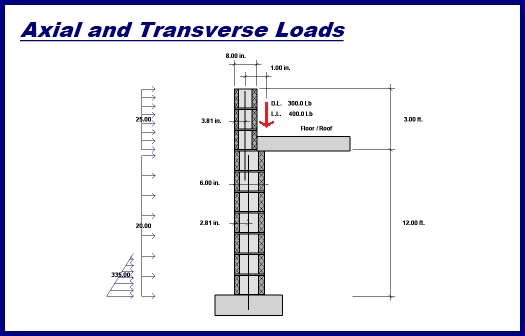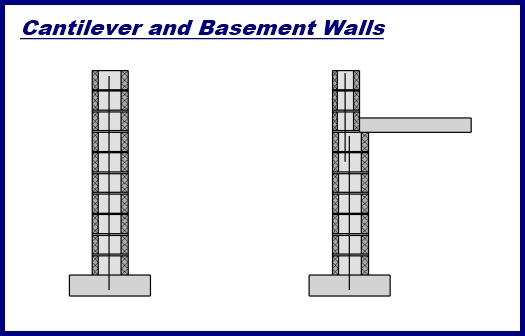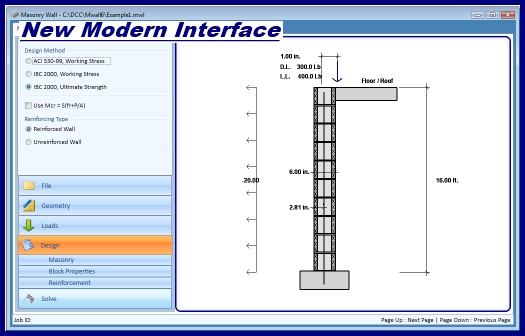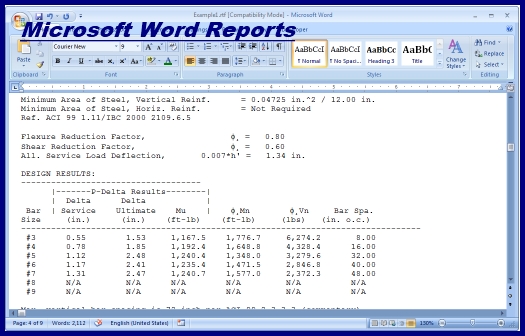
Technical Specifications
Masonry Wall software has been updated to follow ACI 530-11 and IBC 2012 design codes. It easily designs masonry walls for axial and out-of plane bending loads (wind and seismic). Wind and seismic designs follow ASCE 7-10 and IBC 2012 codes.
Masonry walls can be constructed from either clay or concrete masonry and can be either reinforced or unreinforced using partial or full grouting.
Masonry walls can be designed using both working stress and strength methods.Unlike other programs or design aides that design for only flexure and/or axial flexure interaction, Masonry Wall also designs the wall for shear, deflections and P-delta effects.
Masonry design properties are automatically computed by the program from the block unit strength and grout properties, making operation of the program as simple as filling out a couple of simple tabbed forms and pressing Solve.
- NEW: Masonry Wall 7 has been updated to include ACI 530-11 and IBC 2012 design codes. Walls can be designed for Allowable stress or Ultimate strength using either ACI or IBC methods.
- NEW: Unreinforced wall can be now designed using ACI/IBC Ultimate strength design method.
- NEW: Seismic loads (equivalent static) are computed using IBC 2012 or ASCE 7-10.
- Design of partially grouted and solid walls using either running or stack bond.
- For reinforced walls, reinforcing may be placed in a single or double layer.
- When using IBC 2012/ACI 2011 Ultimate Strength Design, Masonry Wall performs a P-Delta analysis, as required by code.
- Walls can be cantilevered or supported at the top and bottom. Support conditions at the bottom can be fixed, partially fixed or pinned. Masonry Wall automatically adjusts the wall’s effective length factor (k-factor) for the selected support condition.
- Loads can include self-weight, axial loads (w/wo eccentricity), equivalent fluid pressure due to soil, uniform and concentrated lateral loads on the wall and seismic loads.
- Masonry Wall automatically uses the load combinations required by the selected design code; however the user may modify the load factors to define their own combinations.
- Walls can include a parapet, which is also designed.
- Units can be US Customary or metric.
- Output includes required bar spacing for various bar sizes or, for the case of unreinforced walls, spacing of grouted cells.
- Graphic outputs include an axial load-moment diagram (ACI and IBC working stress designs) and a plot/print of the loaded wall.
- Dynamic graphics update whenever an input is entered or edited.
- Reports are generated in Microsoft Word or any other word processing software.



